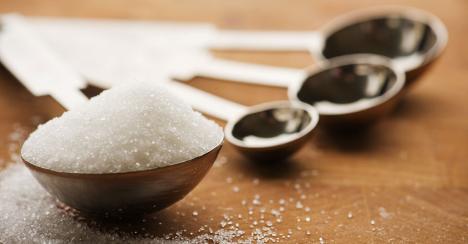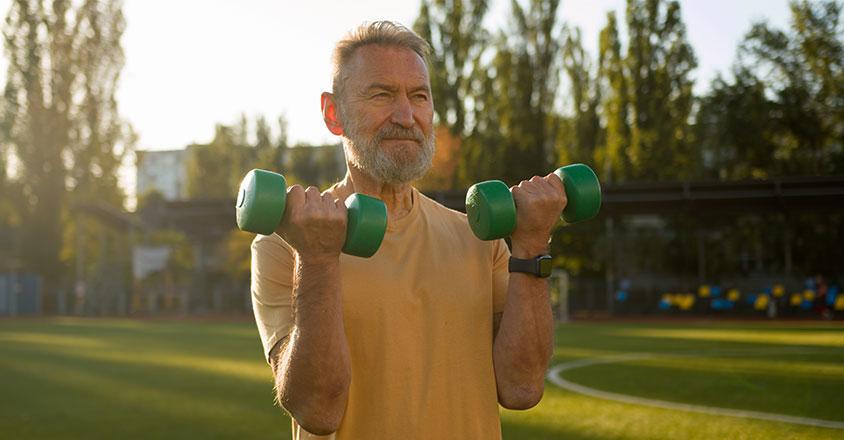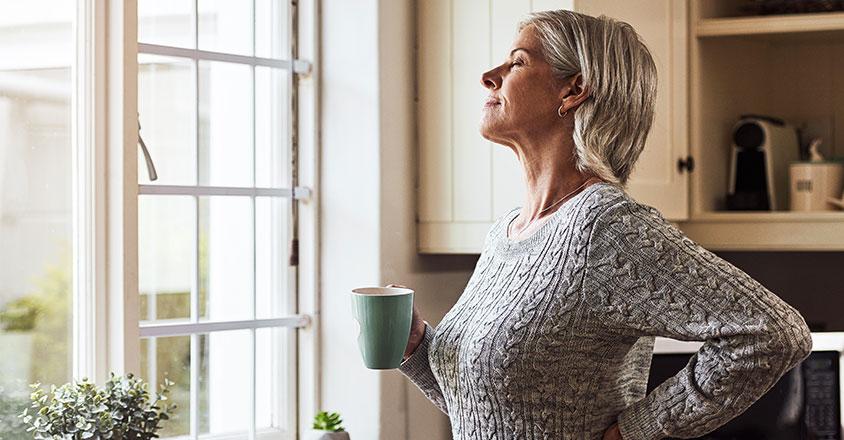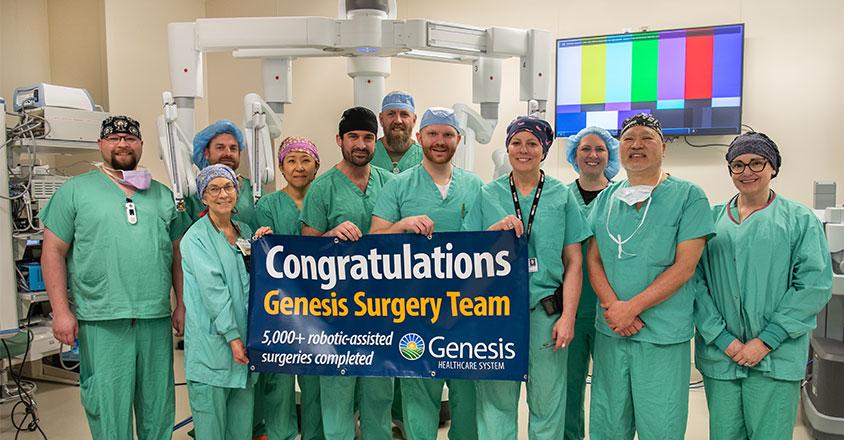Byers, Whitney R.


One in 10 people have diabetes. Approximately 38 million adults in the United States have diabetes, with one in five unaware they have it. Over 54,000 Ohioans learn they have diabetes each year.
The Centers for Disease Control and Prevention (CDC) describes diabetes as “a chronic disease that affects how your body turns food into energy.” Whether you’ve been diagnosed or care for someone with diabetes, understanding and controlling the condition is important.
Your doctor may recommend an A1C test with wellness checkups. An A1C test provides your average blood glucose levels (blood sugar) over the past three months. A result of 6.5% (140 mg/dL) or higher is generally accepted as a diabetes diagnosis.
Maintaining blood glucose levels is crucial for controlling diabetes. The desired level for most adults with diabetes is less than 7% (154 mg/dL). Healthy glucose levels should be between 80 and 130 mg/dL before meals.
According to the American Diabetes Association, Type 1 diabetes means the pancreas doesn’t produce insulin, which helps our bodies control blood sugar. Type 2 diabetes occurs when the body doesn’t produce enough insulin or use insulin properly.
The American Diabetes Association says diet and physical activity are the two most important tools for diabetic wellness. Talking to your doctor is a good step toward modifying your routine.
“Diabetes can be managed with the proper treatment and lifestyle,” said Mohammad T. Ijaz, M.D., Fellowship-trained and Board-certified Endocrinologist, who specializes in diabetes at Genesis Endocrinology. “I want to know about a patient’s daily activities to help them achieve their wellness goals.”
Resources such as finger pricking are available to track blood sugar. A more technological option, a continuous glucose monitor (CGM), offers patients continuous real-time data.
The National Institute of Diabetes and Digestive and Kidney Diseases describes a CGM as a small sensor placed under the skin, usually on the arm or stomach. A transmitter sends information to a smartphone app, receiver or insulin pump. Sensors should be changed every few weeks.
There are many benefits to using a CGM:
Blood sugar measurements are taken continuously.
Easy tracking for food, beverage, exercise and medication activity.
Alerts notify you and caregivers if your blood sugar is too low or too high.
Detailed data can be easily downloaded to monitor progress.
Information is sharable with doctors.
CGMs are available for anyone age 2 and older. Your doctor can help you understand the data and set goals for your progress.
"We see significant improvements in patients when they regularly use their monitors,” said Dr. Ijaz. “When patients are more aware of their sugar, they're more careful with their diet and daily activity.”
Managing blood sugar can also help prevent additional health concerns. The American Diabetes Association recommends that diabetes patients monitor themselves for other conditions, including their eye, kidney, foot and heart health.
Diabetes is the primary reason for blindness in people between 18 and 64. Heart disease and stroke risks are also higher, and approximately one in three adults with diabetes will have chronic kidney disease.
Neuropathy (nerve damage) and circulation concerns also need to be monitored. Taking care of your feet is essential to prevent infections, ulcers or calluses, leading to permanent damage or toe or limb loss. Talk to your doctor about the best footwear. Diabetic shoes are also available.
Genesis Diabetes & Nutrition Education offers self-management education classes for patients and caregivers. The program includes a personal evaluation, classes and a follow-up session. Support groups are also available. For more information about the program, call 740-454-4568.

Listen to the “Sounds of Good Health” podcast featuring Dr. Ijaz:

LiveWell
Prediabetes is like a warning lightSome people tend to ignore check engine lights or put off changing a furnace filter when the sensor goes off. One warning you can’t afford to ignore is a prediabetic diagnosis.

Endocrinology
Keys to preventing Type 2 diabetesExperts agree a healthy diet, regular exercise and weight management can prevent Type 2 Diabetes. This sounds easy, yet more than 25 million Americans suffer from some form of Type 2 Diabetes.

Nutrition
Live the Sweet Life … Without SugarOne of our sweetest addictions is killing us. Sugar has been linked to weight gain and cavities for decades, as dentists worldwide often remind us. Beyond ruining your beach body or perfect smile, sugar is also linked to cardiovascular disease.
Learn more at Diabetes Management | Genesis Healthcare System.
Genesis HealthCare System’s Health and Wellness content conveniently provides accurate and helpful information. Your health history and current health may impact suggestions provided through our Health and Wellness content. Although we hope this information is helpful, it is not a substitute for your doctor's medical advice. Before making any significant changes, please consult your doctor.

Whether you’ve been diagnosed or care for someone with diabetes, understanding and controlling the condition is important.
Muscle loss can feel like one of those things that happens to someone else until it creeps up on you. Whether it's aging, a sedentary lifestyle or life getting in the way, muscle loss is more common than you'd think. But here’s the good news. You can avoid it with easy-to-follow tips that make you feel stronger and more energized.
Your muscles do more than help you lift things. According to the National Institute of Arthritis and Musculoskeletal and Skin Diseases, they support your bones, help you move and boost your metabolism. The more muscle you have, the more calories you burn at rest. Who doesn’t want that?
1. Stay active
Muscles love movement. Whether it’s walking, swimming or dancing in your living room, regular activity is vital to keeping them strong. Aim for at least 30 minutes of movement most days of the week.
2. Protein power
Muscles thrive off a balanced diet of essential proteins and amino acids. According to Harvard Health, animal sources (meat, eggs and milk) are considered the best, as they provide the proper ratios of all the essential amino acids.
3. Hydrate
Dehydration can lead to muscle cramps and fatigue, so drinking enough water is crucial for muscle function and recovery. Keep a water bottle nearby and sip throughout the day.
4. Rest and recovery
Muscles grow when you rest. Sleep is essential for recovery, so aim for 7-9 hours of sleep each night to give your muscles time to repair.
5. Strength training
You don’t need to be a bodybuilder, but lifting weights or doing bodyweight exercises like squats or push-ups will help maintain muscle mass and strength.
By staying active, eating well and getting enough rest, you can prevent or minimize muscle loss and continue to feel strong, no matter your age. It’s all about consistency.
Sign up for our digital newsletters to receive health tips, recipes, success stories for inspiration and information about new doctors to help you on your journey to better health.
Genesis HealthCare System’s Health and Wellness content conveniently provides accurate and helpful information. Your health history and current health may impact suggestions provided through our Health and Wellness content. Although we hope this information is helpful, it is not a substitute for your doctor's medical advice. Before making any significant changes, please consult your doctor.

You can avoid muscle loss with easy-to-follow tips that make you feel stronger and more energized.
When was the last time you stopped to appreciate a few minutes of silence?
Pause and think about it.
Instead of filling time by turning up the music or watching the latest viral video, find time today to welcome the quiet.
According to Piedmont Healthcare, taking time to be still can help you become more productive. They offer three main mental and emotional benefits of practicing silence:
Clarity
Time to recognize and address emotions
Improved decision making
The Mayo Clinic recommends meditation to find fast relief from stress to feel calm and balanced. Meditation doesn’t have to involve closing your eyes. A type of meditation called open awareness is described by Harvard Health as selecting a task, like eating or working outside, and paying attention to your body while breathing and engaging your senses. Focus only on the task at hand. Encourage outside thoughts to pass by, like clouds moving through the sky.
Turn off the radio while driving.
Cook without the TV in the background.
Meditate while on a walk.
Keep your lunch break free from social media.
Connect spiritually. Many religious traditions encourage stillness.
Try a mindfulness app to enable quiet time and reflection.
Practicing silence can also result in physical changes. When your mind feels settled, your body will as well, encouraging relaxation and healing.
This doesn’t mean you have to take 20 minutes a day to find solitude. Start by taking a few minutes to find quiet time, perhaps in the morning, before bedtime or even when you’re trying to meet your daily step goal. Embracing silence will help you feel refreshed and bring the best version of yourself to your day.
Sign up for our digital newsletters to receive health tips, recipes, success stories for inspiration and information about new doctors to help you on your journey to better health.
Genesis HealthCare System’s Health and Wellness content conveniently provides accurate and helpful information. Your health history and current health may impact suggestions provided through our Health and Wellness content. Although we hope this information is helpful, it is not a substitute for your doctor's medical advice. Before making any significant changes, please consult your doctor.

Instead of filling time by turning up the music or watching the latest viral video, find time today to welcome the quiet.
The Genesis HealthCare System Surgery Team recently surpassed 5,000 robotic-assisted surgeries. Robotic-assisted surgery is when a specially trained surgeon operates robotic arms to move instruments in ways that human hands cannot and to reach into tiny openings. The advantages of robotic-assisted surgeries are smaller incisions, pinpoint precision, faster recoveries, lower infection rates and shorter hospital stays. Genesis offers robotic-assisted surgeries for a variety of specialties, including general, thoracic, urology and gynecology surgeries.
“Robotic-assisted surgery is an advanced form of minimally invasive surgery,” said Stuart Chow, D.O., F.A.C.O.S., F.A.C.S, Medical Director of Trauma and Robotic Surgery Programs at Genesis HealthCare System. “Genesis has been performing robotic-assisted surgery for over a decade and added a second surgery robot in 2022. It’s exciting that our community hospital can offer this innovative technology to our patients. Genesis ranks in the top 3% of all hospitals for utilization of robotic-assisted surgeries with the DaVinci Xi system.”

The Genesis HealthCare System Surgery Team recently surpassed 5,000 robotic-assisted surgeries.
Vaping has gained popularity as a "safer" alternative to smoking, but it’s far from harmless. Here’s why you should think twice before taking a puff.
Vaping liquids often contain nicotine, flavorings and other chemicals. According to the American Lung Association, while these might sound harmless, when heated, they can break down into toxic substances like carcinogens (chemicals known to cause cancer) and diacetyl (chemical linked to “popcorn lung”). These chemicals can cause lung damage, inflammation and other serious health issues.
Vaping is not without its dangers to the lungs. It can cause inflammation, reduce lung function and lead to a condition called "popcorn lung," which results from inhaling a chemical called diacetyl, found in some flavored vapes. Over time, this can make it harder for your lungs to fight infections and may lead to chronic respiratory issues.
Most e-cigarettes contain nicotine, which is highly addictive. Even if you’re not a smoker, vaping can lead to nicotine addiction. According to the National Institute of Drug Abuse, this can increase your heart rate, raise blood pressure and put you at a higher risk of cardiovascular disease.
Vaping is particularly popular among teens, many of whom believe it’s safe. But nicotine can affect brain development, impairing memory, attention and learning in young people.
While vaping might seem like a safer option, it still carries significant health risks, including lung damage and addiction. Protect your health and avoid the risks. Your body will thank you.
Sign up for our digital newsletters to receive health tips, recipes, success stories for inspiration and information about new doctors to help you on your journey to better health.
Genesis HealthCare System’s Health and Wellness content conveniently provides accurate and helpful information. Your health history and current health may impact suggestions provided through our Health and Wellness content. Although we hope this information is helpful, it is not a substitute for your doctor's medical advice. Before making any significant changes, please consult your doctor.

Vaping has gained popularity as a "safer" alternative to smoking, but it’s far from harmless. Here’s why you should think twice before taking a puff.
Maybe you want to run a marathon, write a book, or lose a few pounds. Regardless of what you desire, setting goals and planning is the best way to achieve them. Not sure where to start? SMART goals could be what is missing in your life.
SMART goals are a popular method for setting goals. SMART stands for:
Specific – A bad example of a goal is to say I will get in better shape. A good example is to say I will exercise for 30 minutes a day, five days a week.
Measurable – Instead of saying, I will improve my cardio fitness, say I will cut 2 minutes off the time it takes me to do a 5K.
Attainable – Once you reach a certain age, a five-minute mile becomes unlikely. As will a six-minute and so on. Make sure the goal you set is something you can do with practice, time and effort.
Relevant – Is the goal important to you at this point in your life? According to an article on the Harvard Health website, if the goal is not important to you, then you are much less likely to follow through to achieving it. If you have two young children and work full-time, you may need to wait a while before training for a marathon.
Time-bound – Do you have time in your life to achieve your goal? Also, set a date for when you will achieve it. If it is to take two minutes off your 5K, include whether that is in six months, one year, etc.
SMART goals can be used for almost any type of goal, from fitness to nutrition to work and personal. You can find more information about SMART goals in numerous places. You may want to start with this article on the Harvard Health website.
If you decide to set a SMART goal to get in shape, please start by contacting your doctor to make sure you start with an appropriate workout.
Sign up for our digital newsletters to receive health tips, recipes, success stories for inspiration and information about new doctors to help you on your journey to better health.
Genesis HealthCare System’s Health and Wellness content conveniently provides accurate and helpful information. Your health history and current health may impact suggestions provided through our Health and Wellness content. Although we hope this information is helpful, it is not a substitute for your doctor's medical advice. Before making any significant changes, please consult your doctor.

Not sure where to start? SMART goals could be what is missing in your life.
Social media influencers promote all kinds of products and lifestyles. What if you could influence your metabolism, as in speed it up? Then you could burn more calories, which could help you lose weight.
To learn more, take our quiz.
If want more information on why sleep matters, take our “Is Sleep Important?” quiz.
Before starting any exercise program, please consult with your doctor.
Sign up for our digital newsletters to receive health tips, recipes, success stories for inspiration and information about new doctors to help you on your journey to better health.
Genesis HealthCare System’s Health and Wellness content conveniently provides accurate and helpful information. Your health history and current health may impact suggestions provided through our Health and Wellness content. Although we hope this information is helpful, it is not a substitute for your doctor's medical advice. Before making any significant changes, please consult your doctor.

What if you could influence your metabolism, as in speed it up? To learn more, take our quiz.
Did you know that Alzheimer’s disease currently impacts over 6.7 million Americans? The Alzheimer’s Association defines the disease as a type of dementia that affects memory, thinking and behavior. Alzheimer’s can progress to eventually disrupt daily tasks.
As an expert in his field, we contacted Even F. Wang, M.D., Board-certified in Neurology and Clinical Neurophysiology. He practices at Genesis Neuroscience Center.
Dr. Wang explains that dementia is a category of neurological diseases, and Alzheimer’s falls under that category.
“I find that people with Alzheimer’s don’t realize they’re experiencing symptoms,” said Dr. Wang. “It’s usually a spouse or a child who notices behavioral changes indicating an issue.”
Symptoms include:
Increased memory loss
Personality changes
General confusion
If you or your loved one is experiencing any of the above, it’s important to make an appointment with a primary care provider. From there, you may be referred to a neurologist.
Dr. Wang said that neurologists can run tests, including mental status examinations, spinal taps and MRIs, to rule out other reasons for memory loss. From there, doctors can determine whether you may have Alzheimer’s and discuss treatment options.
While there is no cure for Alzheimer’s, it's being heavily researched internationally. With a better understanding of the disease comes better treatment.
According to the National Institute on Aging, available treatments may temporarily improve or stabilize memory and thinking skills. Other medications can help manage specific symptoms of Alzheimer’s, like behavioral problems, anxiety, depression and sleeplessness.
“There is a lot of excitement in our field surrounding Alzheimer’s treatment,” said Dr. Wang.
In July of 2023, U.S. Food and Drug Administration traditionally approved the first medication proven to slow the progression of Alzheimer's.
There are many risk factors that increase your risk of Alzheimer’s. Some of them, like age and genetics, are out of your control. Symptoms usually appear after 65, and the risk increases as you age. That does not mean that Alzheimer’s is a normal part of aging, according to the CDC. While things like multitasking may slow with age, memory and knowledge, remain stable and can even improve with age.
Scientists currently know of more than 70 genetic variations associated with Alzheimer’s. The National Institute of Aging states that just 10 years ago, scientists only knew of 10 variations. The research continues to improve our understanding of the disease. Furthermore, those who develop Alzheimer’s don’t always have a family history of the disease. Those who do have a parent or sibling with Alzheimer’s still have a higher risk of developing Alzheimer’s than those who don’t.
Diabetes, high blood pressure and smoking increase your chance of developing Alzheimer’s. “Living an active lifestyle and keeping an active mind are ways to reduce or delay your risk of Alzheimer’s,” said Dr. Wang. “Letting your brain rest by getting enough sleep is another good practice.”
Quit drinking alcohol and smoking
Correct hearing loss
Maintain a healthy weight
Get enough sleep
The Sleep Health Foundation recommends seven to nine hours for adults 18 through 64 and seven to eight hours for adults 65 and older.
Manage your blood pressure and blood sugar
Be physically and mentally active
Word puzzles, number puzzles and learning new skills are ways to give your brain a workout.
Adding exercise to your life helps you stay active. Try activities you enjoy, like walking, workout classes or gardening.
As Dr. Wang said, delaying Alzheimer’s comes back to leading a healthy lifestyle. Making your health a priority now can make a big difference down the road.
If you or a loved one think you may be experiencing symptoms of Alzheimer’s, schedule an appointment with your primary care provider to begin a treatment plan that is right for you.

Dr. Wang explains that dementia is a category of neurological diseases, and Alzheimer’s falls under that category.
Taking a worn-down, broken muscle car and transforming it into a flashy fresh ride takes time, skills and finances, but John Rusinko and his wife Haddi say it’s worth it. They spend retirement side by side, saving vintage vehicles from rusty fates by restoring them into gorgeous, roaring rides.
Last year, John’s attention broadened from restoring muscle cars to restoring muscle when he was thrown from his lawn mower after sliding down a steep hill on his property.
“I believe that’s when I hurt my hamstring,” he said. “A month later, I went hunting and fell.”
For the next several months, John lived with a sharp, stabbing pain. An MRI revealed a partially torn hamstring muscle. Despite steroid injections and physical therapy, the pain remained. Then he met Brenton Bohlig, M.D., a Fellowship-trained and Board-certified Physical Medicine and Rehabilitation Specialist at Genesis Orthopedic Sports Medicine, who recommended a platelet-rich plasma (PRP) injection.

Brenton Bohlig, M.D.
Fellowship-trained and Board-certified
Physical Medicine and Rehabilitation Specialist
Genesis Orthopedic Sports Medicine
PRP treatments use the patient’s blood cells to accelerate healing. To create the platelet-rich plasma, a sample of whole blood is usually drawn from the arm and then placed into a device called a centrifuge. The centrifuge spins until the platelets separate and become concentrated within the blood’s plasma. This platelet-dense precious plasma can fuel and accelerate healing when injected directly into an injured area.
“Using platelet-rich plasma harnesses the body’s natural healing ability,” said Dr. Bohlig. The injection utilizes the patient’s blood as the activating agent, so patients sidestep adverse reactions that may come with medications or foreign substances.
“It’s a more natural way. Harnessing the proteins and growth factors that promote healing lets your body do what it’s meant to do. We simply direct where the healing takes place. It’s wonderful to see how this treatment benefits people with partially torn tendons and ligaments,” Dr. Bohlig said.
On the day of the injection, Dr. Bohlig told John not to anticipate results for about six weeks. John waited patiently, and relief came right on cue.
“Within the seventh week, I was walking fine. Before, it felt like someone had stuck a knife in me and never pulled it out, but after those six weeks, I had no pain. All because of my blood,” he said. “No medications, no therapy, just my blood.”
With his hamstring healed, John returned to living his best life. He remains pain-free more than a year after the PRP injection. He hunts, chops wood and cares for his land. On most days, John uses his restored hamstring to twist and turn around the vehicles he and his wife enjoy restoring.
For Dr. Bohlig, success stories like John’s fuel his desire to restore people to their best quality of life. “It’s great to see people return after treatment,” he said. “Where there was a grimace on their face from pain with certain movements, there’s now a smile as they show off what they can do. I’m thrilled that we can provide the care they need on the road to rec

Taking a worn-down, broken muscle car and transforming it into a flashy fresh ride takes time, skills and finances, but John Rusinko and his wife Haddi say it’s worth it.